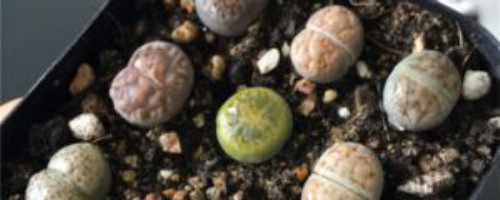Lithophore is native to South and southwest Africa, and is commonly found in bedrock crevices and gravel. It is called "living stone". Non-rainy season growth and flowering, flowering time, stone flowers like to cover the desert with a huge carpet. But when the dry summer comes, the desert is restored to the "stone" world. Lithophore is a perennial succulent herb of the genus Lithophore of the Apricot family. The plants are almost stemless, the leaves are spherical, the morphology is varied, and the flowers are large and colorful. This plant is native to the arid regions of southern Africa and is now found in many parts of China. In addition to ornamental value, stone flower also has a certain medicinal value, modern Chinese medicine research shows that stone flower has the effect of antipyretic cough, phlegm, soft and hard, water.

Stone flower, stone grass, like hooves, ingot, female fairy, butt flower.
Stone flowers like warm winter and cool summer climate, suitable for growing in warm dry and sunny environment. Fear of low temperature, avoid strong light, the growth temperature is 10~30℃, it is appropriate to grow in loose and breathable neutral sandy loam.
The growth form of the stone flower is more special, and the molting phenomenon will occur in the dormant period, and the appropriate reduction of water in winter and summer will help molt.
The 3-4 year old stone flower opens yellow, white, pink and other colors from the middle gap of the opposite leaves in autumn, which opens in the afternoon, closes in the evening, and opens again in the afternoon of the next day, and a single flower can open for 3-7 days. When flowering, the flowers almost cover the whole plant, which is very beautiful. And after some varieties reach the age, they will separate into groups. When the flowers fall, they bear fruit, and very small seeds can be harvested.
The meaning of the stone flower - tenacious, the jewel of life, the sheep in the Wolf's skin.